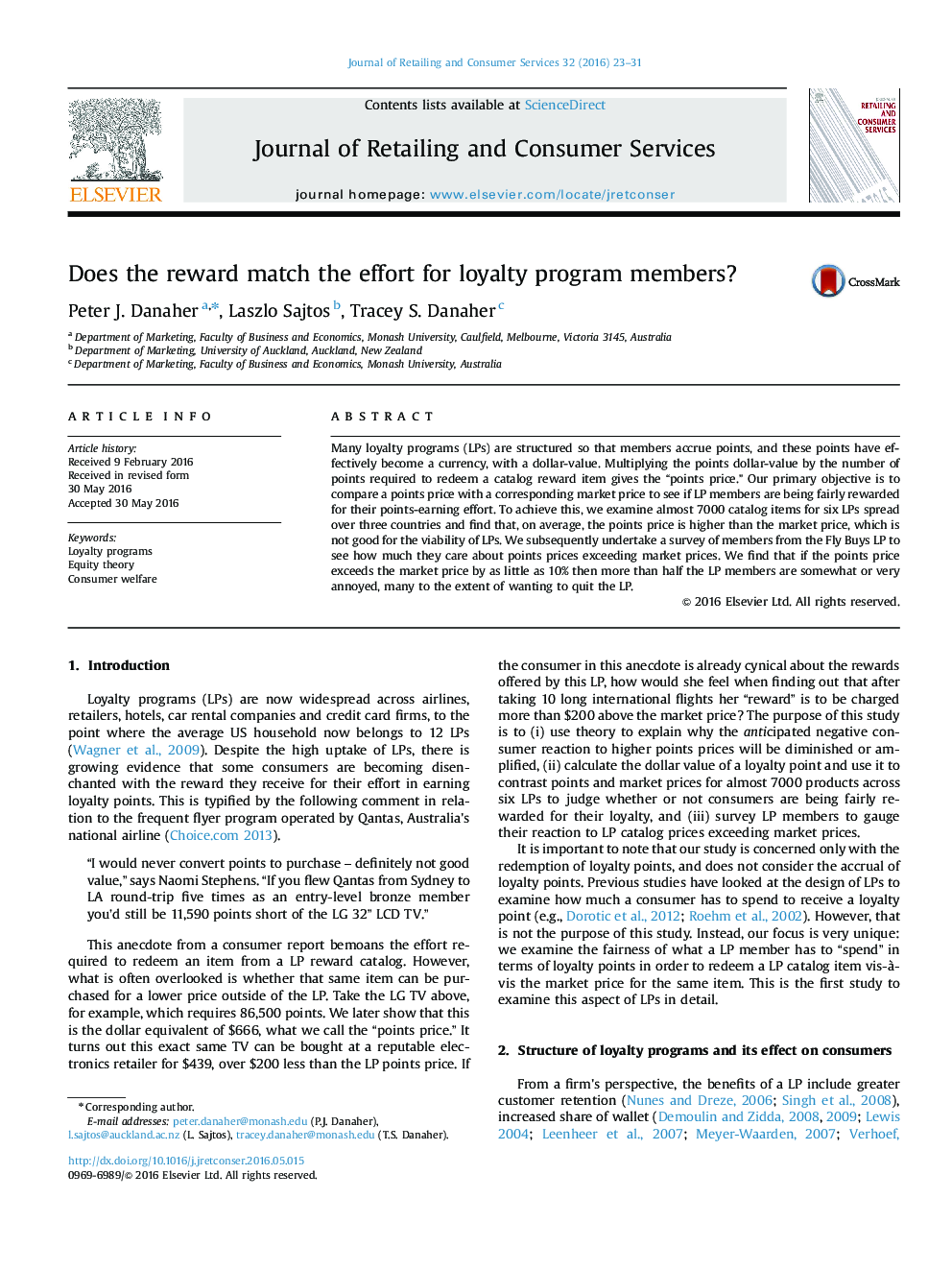| Article ID | Journal | Published Year | Pages | File Type |
|---|---|---|---|---|
| 7433728 | Journal of Retailing and Consumer Services | 2016 | 9 Pages |
Abstract
Many loyalty programs (LPs) are structured so that members accrue points, and these points have effectively become a currency, with a dollar-value. Multiplying the points dollar-value by the number of points required to redeem a catalog reward item gives the “points price.” Our primary objective is to compare a points price with a corresponding market price to see if LP members are being fairly rewarded for their points-earning effort. To achieve this, we examine almost 7000 catalog items for six LPs spread over three countries and find that, on average, the points price is higher than the market price, which is not good for the viability of LPs. We subsequently undertake a survey of members from the Fly Buys LP to see how much they care about points prices exceeding market prices. We find that if the points price exceeds the market price by as little as 10% then more than half the LP members are somewhat or very annoyed, many to the extent of wanting to quit the LP.
Related Topics
Social Sciences and Humanities
Business, Management and Accounting
Marketing
Authors
Peter J. Danaher, Laszlo Sajtos, Tracey S. Danaher,
